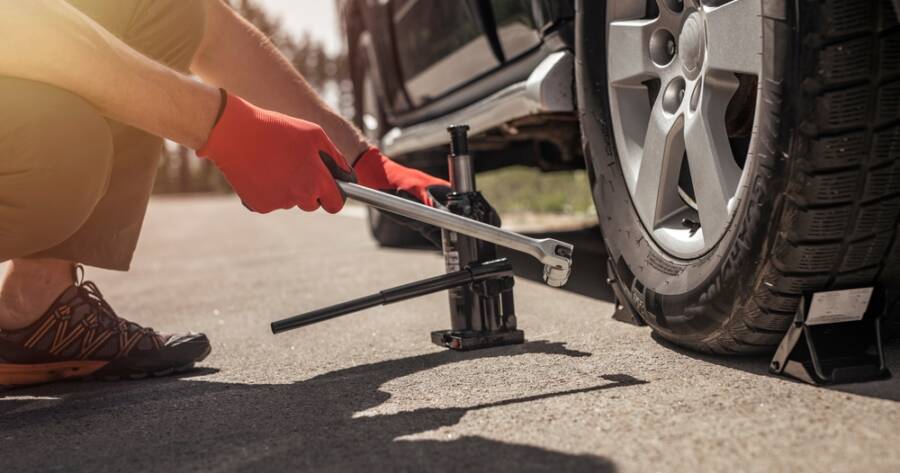Imagine effortlessly lifting your car with the touch of a button. The hydraulic car jack is designed to provide the ultimate portable tire lift solution, ensuring you can handle roadside emergencies with ease. With its user-friendly operation, durability, and portability, this innovative tool is a game-changer for car owners. No more struggling with a traditional jack; a hydraulic car jack makes changing tires and handling car repairs a hassle-free experience. Discover why this essential tool should be in every car owner’s toolkit.
What Are Hydraulic Car Jacks?
A hydraulic car jack is a tool used to lift heavy vehicles, such as cars and trucks, by using the force of hydraulic fluid to generate lifting power. Unlike traditional jacks that rely on mechanical force, hydraulic jacks use fluid to create pressure, which enables the jack to lift a vehicle effortlessly. The hydraulic system consists of a piston, a cylinder, and hydraulic fluid, which work together to multiply force and elevate the car with minimal effort from the user. Hydraulic jacks are available in various sizes, with some designed for personal use and others for professional or industrial applications.
Their simple mechanism and efficiency make them a popular choice for car owners and mechanics alike. When properly used, hydraulic car jacks can quickly and safely lift a vehicle, allowing for tire changes, maintenance, and other repairs. These tools are essential for roadside emergencies or in workshops where fast and reliable lifting equipment is needed.
Benefits of Using a Hydraulic Car Jack
Hydraulic car jacks offer several advantages that make them a must-have tool for car owners. One of the main benefits is their ease of use. With a hydraulic jack, you don’t need to apply significant force to lift a vehicle, which can be difficult with manual jacks. Simply pumping the handle creates enough pressure to lift even large cars, reducing physical effort and making the process faster. Another benefit is the efficiency they provide; hydraulic jacks can lift heavy loads with ease and precision, making them ideal for both light and heavy-duty tasks.
Additionally, hydraulic car jacks are more stable than some other jacking options. They provide better control, which is important for safety when lifting a car. The load capacity of hydraulic jacks varies, but they can support weight from 1,000 pounds to over 7,000 pounds, making them versatile and reliable for different types of vehicles. With proper maintenance, hydraulic car jacks can last for years, offering long-term value to vehicle owners.
Safety Tips When Using a Hydraulic Car Jack
While hydraulic car jacks are easy to use, safety should always be a priority. First, check the jack’s load capacity before use to ensure that it can handle the weight of your vehicle. Never attempt to lift a car that exceeds the jack’s weight limit, as this can lead to failure. Additionally, avoid walking or crawling under a vehicle while it’s being supported by a hydraulic jack. Even if the load seems stable, there is always a risk that the jack could fail. For your safety, always keep the area beneath the jack clear.
It’s also crucial to lift the car from its designated jack points. These points are specifically designed to bear the weight of the vehicle, ensuring that it remains stable while being lifted. To avoid accidents, always wear personal protective equipment (PPE), such as gloves, goggles, and steel-toe boots. Regular maintenance, including changing the oil and checking for fluid leaks, will also help ensure that your hydraulic jack operates safely and efficiently.
Other Types of Car Jacks
While hydraulic car jacks are widely used, there are other types of jacks that car owners may consider based on their specific needs. Scissor jacks are compact and lightweight, making them a great option for emergency roadside situations. They are typically included with cars for emergencies due to their portability, but they require more physical effort to use and generally have a lower lifting capacity compared to hydraulic jacks. These jacks are best suited for light-duty tasks and smaller vehicles.
Bottle jacks are another popular type of hydraulic jack, similar to the standard hydraulic car jack, but with a more vertical design. They provide higher lifting capacity, making them ideal for taller vehicles like SUVs or trucks. However, bottle jacks can be bulkier and less stable compared to other options, requiring proper positioning and caution when in use.
Inflatable jacks are a relatively new alternative. Instead of using hydraulic fluid or a mechanical screw, they rely on air pressure to lift the vehicle. These jacks are lighter, portable, and easy to store, but they generally provide less stability and lifting capacity than hydraulic or bottle jacks. They are particularly useful for emergency situations but may not be as reliable for regular use.
Lastly, jack stands are essential safety tools. They do not lift a vehicle but instead are used to support a car once it has been lifted by a jack. After lifting your car with a hydraulic jack, jack stands provide additional stability to keep the vehicle safely raised during maintenance or repairs. It’s always recommended to use jack stands in combination with a jack to ensure safety when working under your vehicle.
Ready for Any Roadside Challenge
A hydraulic car jack is an invaluable tool for any car owner, offering ease, efficiency, and safety when lifting your vehicle during a roadside emergency or tire change. With its powerful lifting capacity, compact design, and ability to handle heavy loads, it’s a must-have in your car maintenance toolkit. By following proper safety protocols and maintenance tips, you can ensure that your hydraulic jack works reliably whenever needed. Whether you’re a DIY enthusiast or simply want to be prepared for emergencies, investing in a hydraulic car jack will save you time and effort while providing peace of mind.





